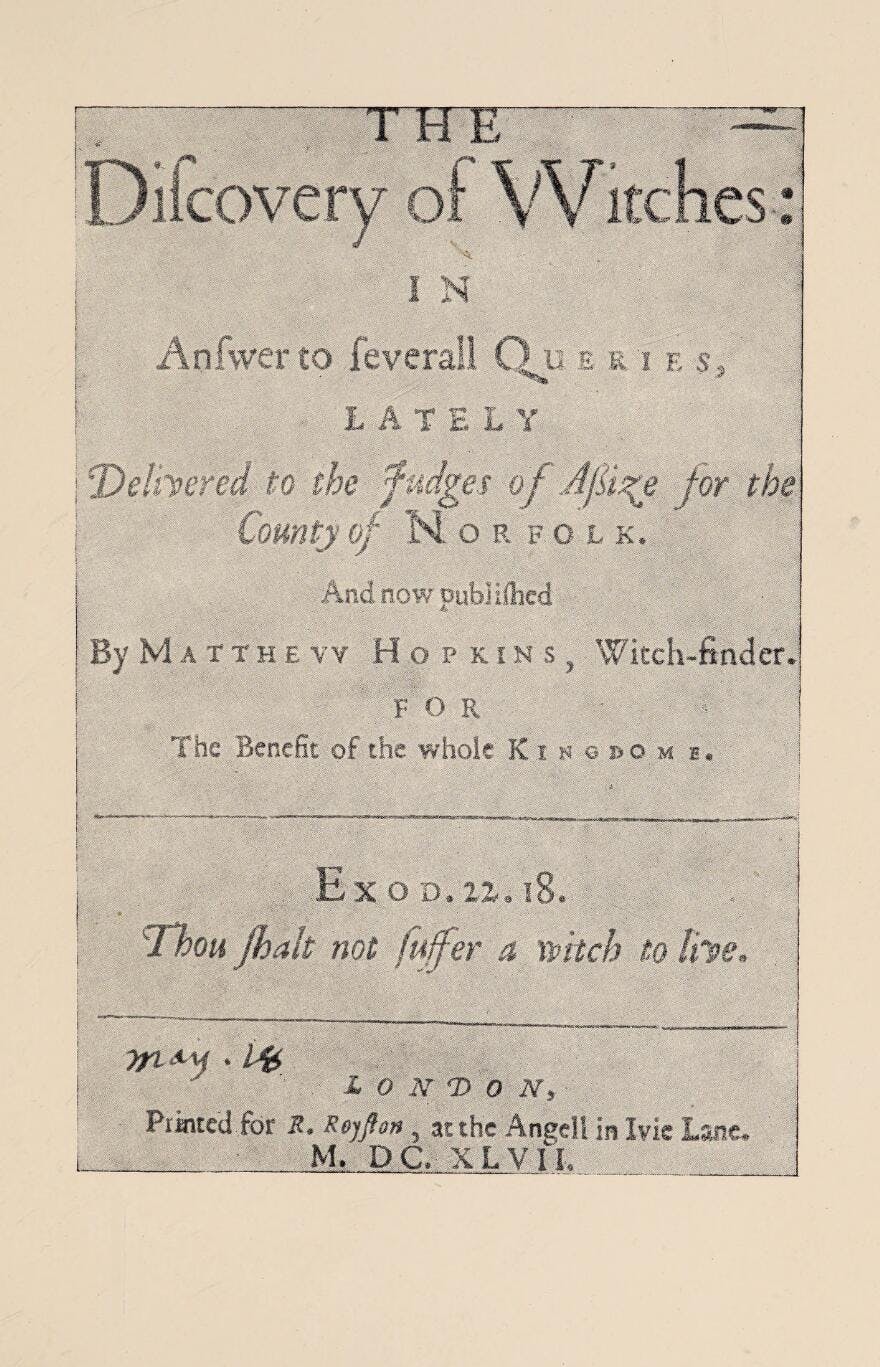Witchfinders in Early Modern Britain
Witchcraft has been a subject of fascination and fear for centuries, and during the early modern period in Britain, it became a matter of life and death. From the 16th to the 18th century, thousands of people, mostly women, were accused of witchcraft and put on trial, leading to their execution.
Witchcraft was viewed as a serious crime during the early modern period, and those accused of it were often subjected to torture and execution. Women were particularly vulnerable to accusations of witchcraft, seen as more susceptible to the powers of the devil by church teachings. It is important to note that variations of witchcraft were present long before this period in Britain, but was heavily associated with the pagans and druids, and became more and more demonised as Christianity became more widespread and embedded in the culture.
Religion played a significant role in the witch-hunting craze of early modern Britain. The Protestant Reformation had created a climate of religious intolerance, and many Protestants believed that witches were in league with the devil and were a threat to the Church. In 1563, the Witchcraft Act was passed, which made it a crime punishable by death to practice witchcraft, and this law was reinforced by the 1604 Witchcraft Act, which made it a crime to even consult with a witch. The Puritans, a group of radical Protestants, were particularly zealous in their pursuit of witches, and many witch trials occurred in areas where they had a strong presence.

From The History of Witches and Wizards, 1720
Witchfinding in early modern Britain was a complex and often brutal process. Accusations of witchcraft could be made by anyone, and once an accusation was made, the accused was often subjected to a range of tortures and interrogations designed to elicit a confession.
The technique of "swimming" the accused was one of the most notorious methods of witchfinding in early modern Britain. It was based on the belief that witches had made a pact with the devil and would therefore be unable to be submerged in water, which was associated with baptism and purity. The accused person would either have their hands and feed bound together or be tied to a chair or other heavy object and thrown into a body of water, such as a pond or river. If they floated, they were considered guilty of witchcraft, but if they sank, they were believed to be innocent. While drowning the accused was supposedly not the aim of this particular trial, it was unfortunately often an outcome. Specific laws were brought into place later in the witchfinding era that if someone subjected another to “swimming” and they drowned, the accuser would have to stand trial for murder.
Another common method of witchfinding was the use of "witch prickers," who were hired to find "witch marks" on the bodies of suspected witches. Witch marks were believed to be evidence of the devil's touch, and included moles, birthmarks, and even wrinkles. The witch pricker would use a sharp instrument to poke and prod the accused, looking for areas of the body that did not feel pain. Once a witch mark was found, it was taken as proof of the accused's guilt. Interestingly it is very common to have areas on the human body which do not feel pain or bleed much simply due to the arrangement of nerves and blood vessels under the skin. This technique of course could easily be doctored by the practitioners who were paid for their work in finding witches.

A page from 'The discovery of Witches' from which the below illustration was adapted for my new t-shirt design.

Available now in the shop
